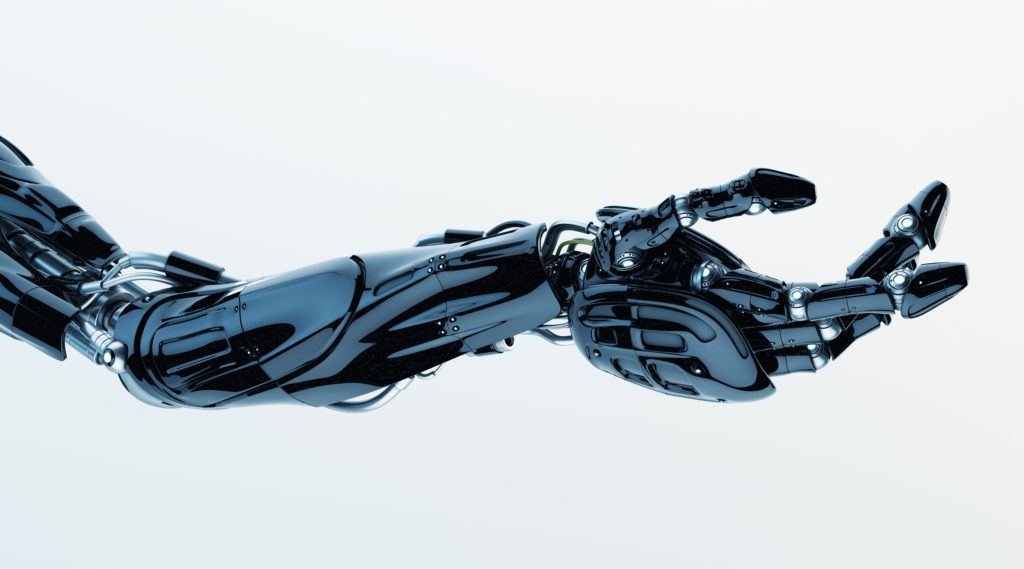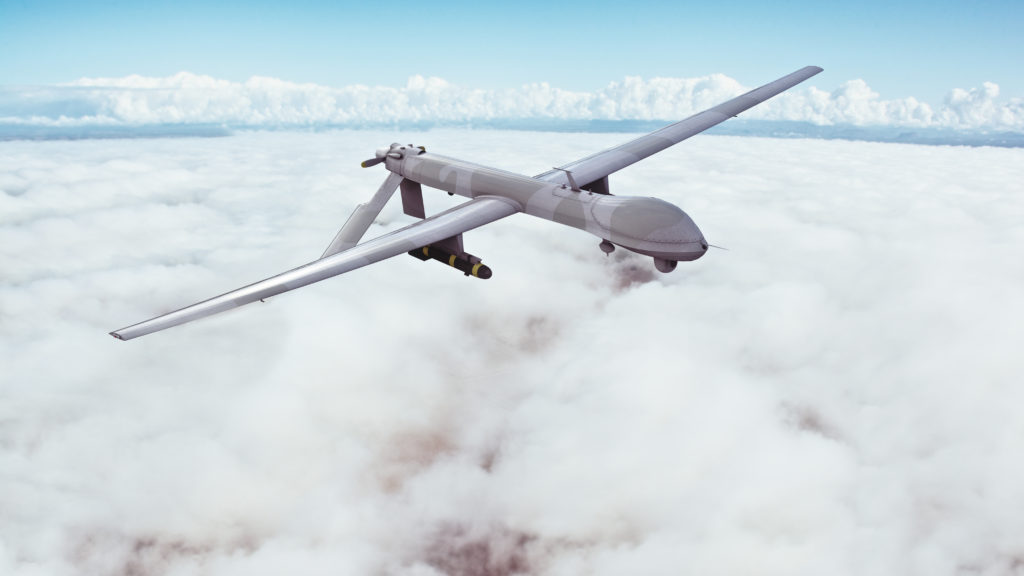Brain-Computer Interface
Part Two of Our Look at Emerging Technology in China and the United States

In our most recent blog, we highlighted how China’s rapidly growing tech sector is challenging America’s lead in the exciting field of artificial intelligence. In this month’s blog, we take a second look at a closely related tech field – BCI – brain computer interface. In BCI, China has established an early, and important lead.
Brain Computer Interface research (BCI) was first conducted in the 1970’s at University of California, Los Angeles. The technology bypasses nerves and muscle tissues to directly connect the brain to the external world, opening new communication channels for human expression. BCI can turn thoughts into observable actions. Through thought-controlled manipulation of external devices, BCI is already helping injured patients recover their mobility. In the future, through remote use, robots may one day become avatars for these individuals.
BCI is a bioscience sector that promises to collect, analyze, and process the electronic signals (synapses which occur between neurons (brain cells)). This technology is opening doors for advances in industry, aerospace, medicine…. and inevitably, military purposes. Each of these markets are valued in the trillions of dollars. There are two development paths currently, invasive devices, and external devices. Invasive (implanted) devices provide a much stronger electrical signal but carry obvious health risks.
In the United States, one firm, Neuralink (owned by Elon Musk), is leading first-wave development. In China, much of the development is coming from the city of Tianjin, already a global tech leader. There, a neuro-engineering team of scientists at Tianjin University has recently developed the second-generation ‘BrainTalker” chip. As one might imagine, development has been slowed for several reasons: availability of front-end collecting chips and high-performance processors. Some of the technology required for Tianjin University’s development is also being held back due to tech blockades emanating from the United States and a few European nations. In the US, these items have been listed under an ‘export control’ list of emerging technologies.
In the United States, a large amount of innovation work has been focused on medical uses for this technology. For instance, in 2015, the FDA approved the first-ever neurostimulator which has proven effective in arresting seizures in epileptic patients. The Chinese, too, are developing biomedical technology, tiny implants that are inserted into brain tissue. These include Deep Brain Stimulation (DBS) and Spinal Cord Stimulation (SCS) implants. This technology is being used in clinical trials with patients who suffer non-motor function related brain issues, such as neuropsychiatric conditions, opioid addiction, Tourette syndrome, depression, and anorexia, Meanwhile, in the West, there is more focus on motor-function related illnesses, such as Parkinson’s disease.

Within China, there are at least four separate sectors that are all concurrently working on brain computer interface technology; government, university research, startups, and established medical device makers. China’s 13th five-year plan included an emphasis on the China Brain Project. A primary motivating factor is China’s realization that by 2030, half the world’s patients with neurodegenerative disease will reside within its borders. The China Brain Project allocates significant research funding into three Chinese universities; Tsinghua University, Tianjin University, and Zhejiang University. In addition, two new research institutes have been opened to work specifically on BCI: the Institute of Neuroscience in Shanghai, and the Chinese Institute for Brain Research, Beijing. In 2020, researchers at Zhejiang University successfully completed the first brain-computer interface implant in a human patient. The patient, a quadriplegic, has mastered the ability to manipulate a robotic arm simply with his thoughts. He can now shake hands, carry drinks, eat fried dough sticks and play Mahjong using the mind-controlled, robotic arm.

The National Engineering Laboratory for Neuromodulation, at Tsinghua University is responsible for the creating China’s first locally developed DBS device. This device is now being produced and sold by PINS Medical, Beijing, for use with patients throughout China.
Tianjin University has developed a ‘Brain Talker’ computer chip, a mind-controlled, rehabilitation hand robot, and a ‘Mind-Typing cap’. Users using this cap can type 69 Chinese characters per minute on a smart phone, much faster than can be typed with thumbs.
Neuramatrix is a Chinese company, incubated at Tsinghua University. The company was launched in 2019 and claims to have a BCI implant chip that competes closely with the chip coming from Elon Musk’s company, Neuralink. Other Chinese firms are focusing on non-invasive, commercial products (mostly headbands) with meditation, and biofeedback applications.
Two firms, PINS Medical and Sceneray offer implant DBS systems on par with, if not more advanced than their Western equivalents. These products are all approved by China’s analog to our FDA and carry the European CE mark. In addition to the Chinese market, both firms are enjoying sales in Pakistan, Bangladesh, and Indonesia. Both companies offer advanced remote wireless control of the implants, with well-established methods for remote programming and calibration of the devices and monitoring battery levels through telemedicine by clinicians working from remote locations.
In addition to these exciting medical engineering breakthroughs, additional work is being conducted for military applications. A search on YouTube will yield a video of a group of drones, flying high above a field. Those drones are being controlled by someone wearing a BCI headband device. American universities, such as University of Delaware and Arizona State University have led development in this field. There is much discussion, both in the United States and in China, regarding military applications for BCI. In the United States, DARPA (Defense Advanced Research Projects Agency) is both research institution as well as source of investment capital behind additional work being done in the field.
China also sees strategic military importance in BCI technology. CCP General Secretary Xi Jinping has referenced innovation research of this type as necessary to ‘keep pace with the times’. The Chinese are interested in the synergies that exist between brain science, artificial intelligence (AI), and biotechnology. To that end, China is seeking to achieve a ‘hybrid intelligence’ for use by the People’s Liberation Army that will provide an entire spectrum of military functions including command, control, communications, computers, intelligence, surveillance, and reconnaissance (C4ISR) systems. Researchers in this field are pursuing development in various forms of warfare; cyber, electronic, and psychological warfare. Lt. Gen. Liu Guozhi, Director of the Central Military Commission Science and Technology Commission has said that “AI will accelerate the process of military transformation, ultimately leading to a profound revolution in military affairs . . . The combination of artificial intelligence and human intelligence can achieve the optimum, and human-machine hybrid intelligence will be the highest form of future intelligence.” Command and control of these ‘informatized’ and ‘intelligentized’ warfare will be achieved through brain-machine integration, enabled by cloud infrastructure.

Chinese military scientists and strategists expect that this revolution in warfare will also demand transformation of the human element of warfare, which may require seeking command of the brain and biological sciences. This work, too, is already underway in both the United States and in China. Chinese Major General He Fuchu serves on the Central Military Commission Science and Technology Commission and has predicted that “The weaponization of living organisms will become a reality in the future, and non-traditional combat styles will be staged. The ‘biological frontier’ will become a new frontier for national defense.” Fuchu has also predicted that battles of the future will be played out with high-performance low-power computing, highly intelligent autonomous decision-making, active learning, and continuous increases in intelligentization, promoting the emergence of highly intelligentized and autonomous combat forces.
As ever, the rate of technological advancement is proceeding at an increasing rate of change. Word4Asia hopes for a positive future; we will continue to monitor and report on these and other fascinating advances. We hope you’ve enjoyed this latest blog. We’ve always got our eyes trained on the latest developments in China, and we enjoy sharing them with you.
Should your plans include projects in mainland China, we hope you’ll reach out. Word4Asia has over twenty years of active presence and on-going productive and mutually beneficial relationships in China. We’ve developed an impressive network, and our understanding, relationships and skills may be valuable to you in your present or future efforts. Please feel free to contact Gene Wood at gene@word4asia.com.
Sources
China develops self-made brain-computer interface chip, curbing tech ‘bottleneck’ amid US tension
China’s Brain-Computer Interface Landscape in 2021: Has the Dragon Woken up to Neurotech?
Mind over matter to transform lives
China Unveils Brain-Computer Interface Chip For Mind-Reading
Brain-Computer Interfaces Are Coming. Will We Be Ready?
Minds at War China’s Pursuit of Military Advantage through Cognitive Science and Biotechnology
China Focus: Brain-machine technology enables paralyzed man drink cola, play mahjong
